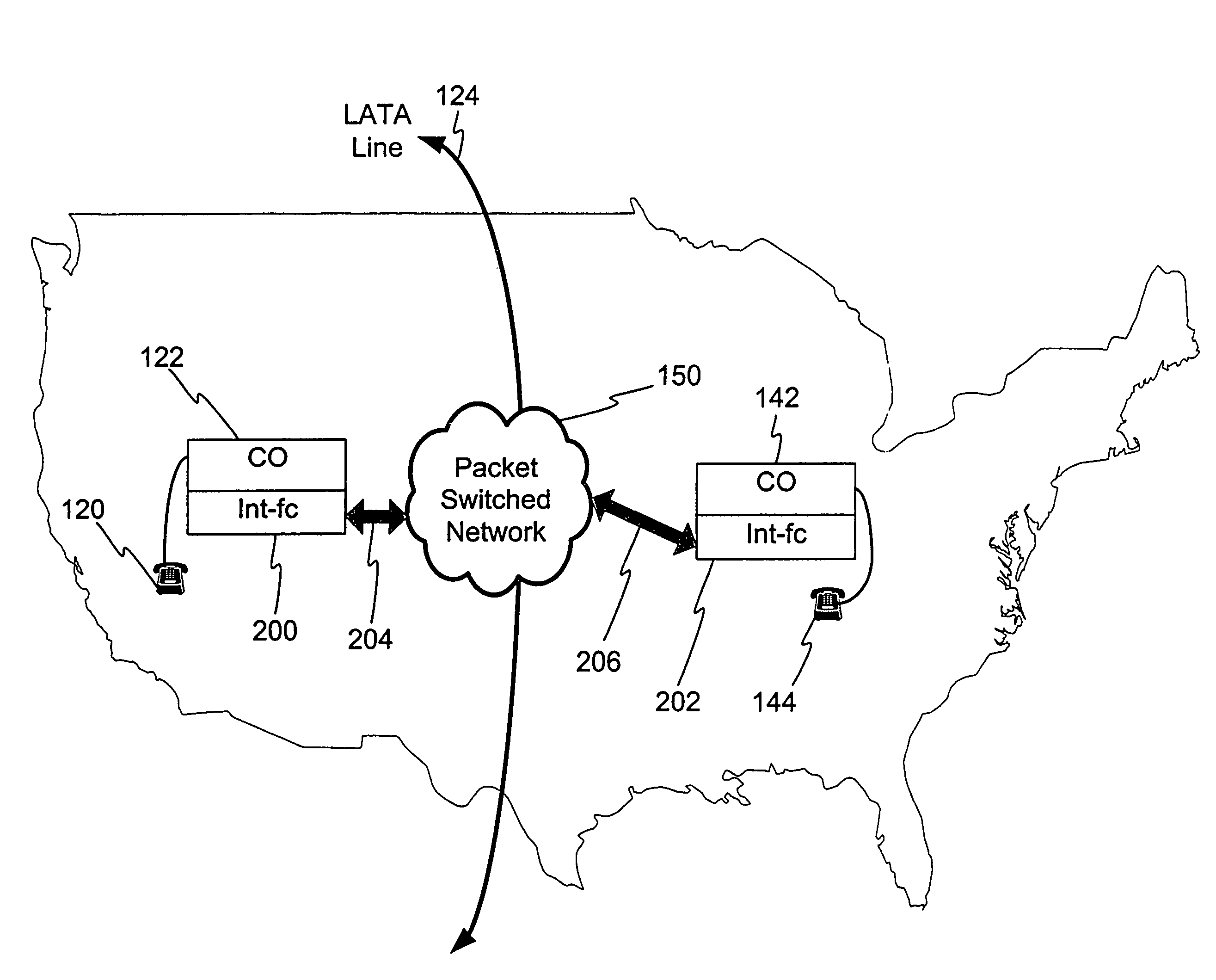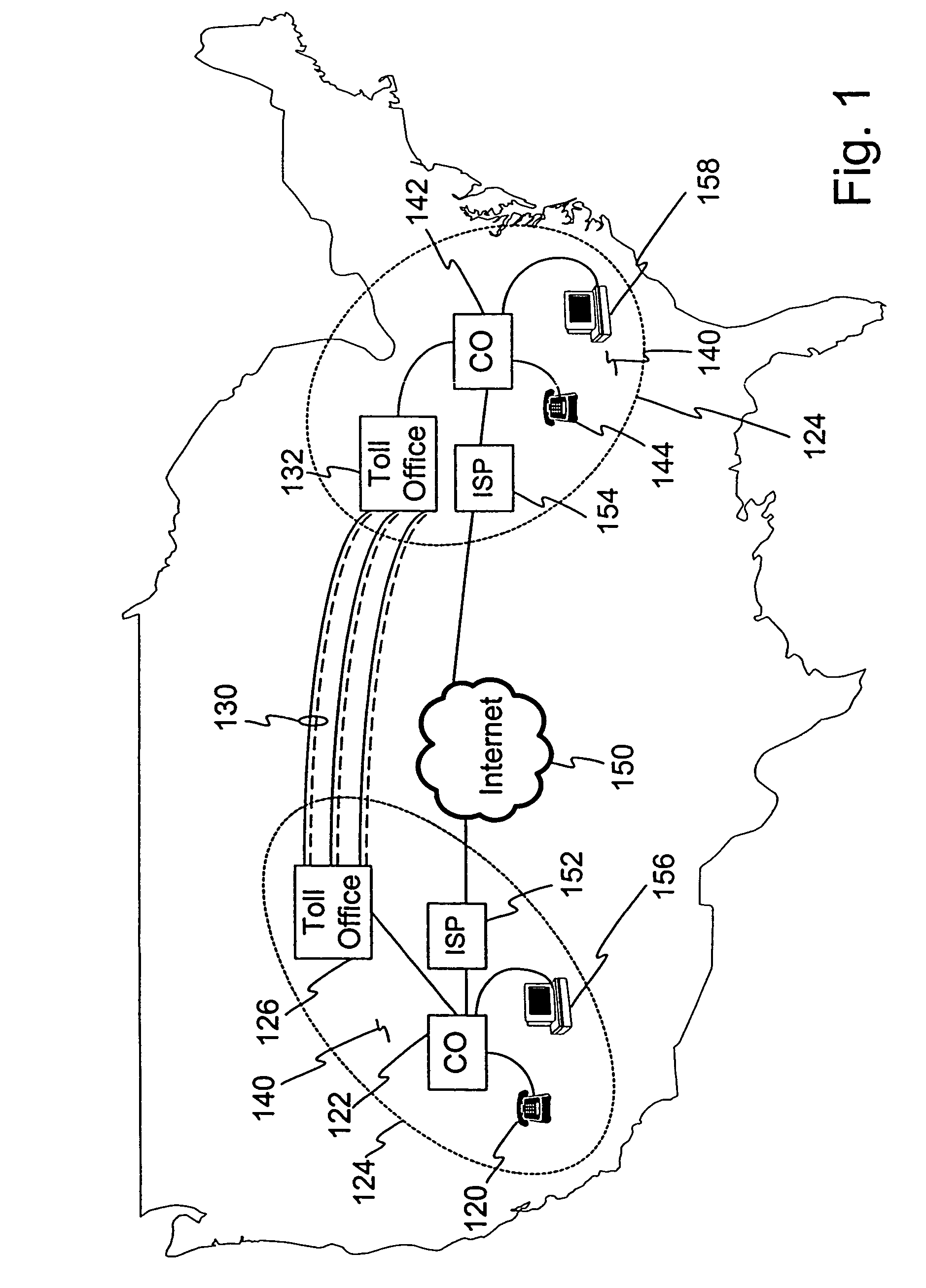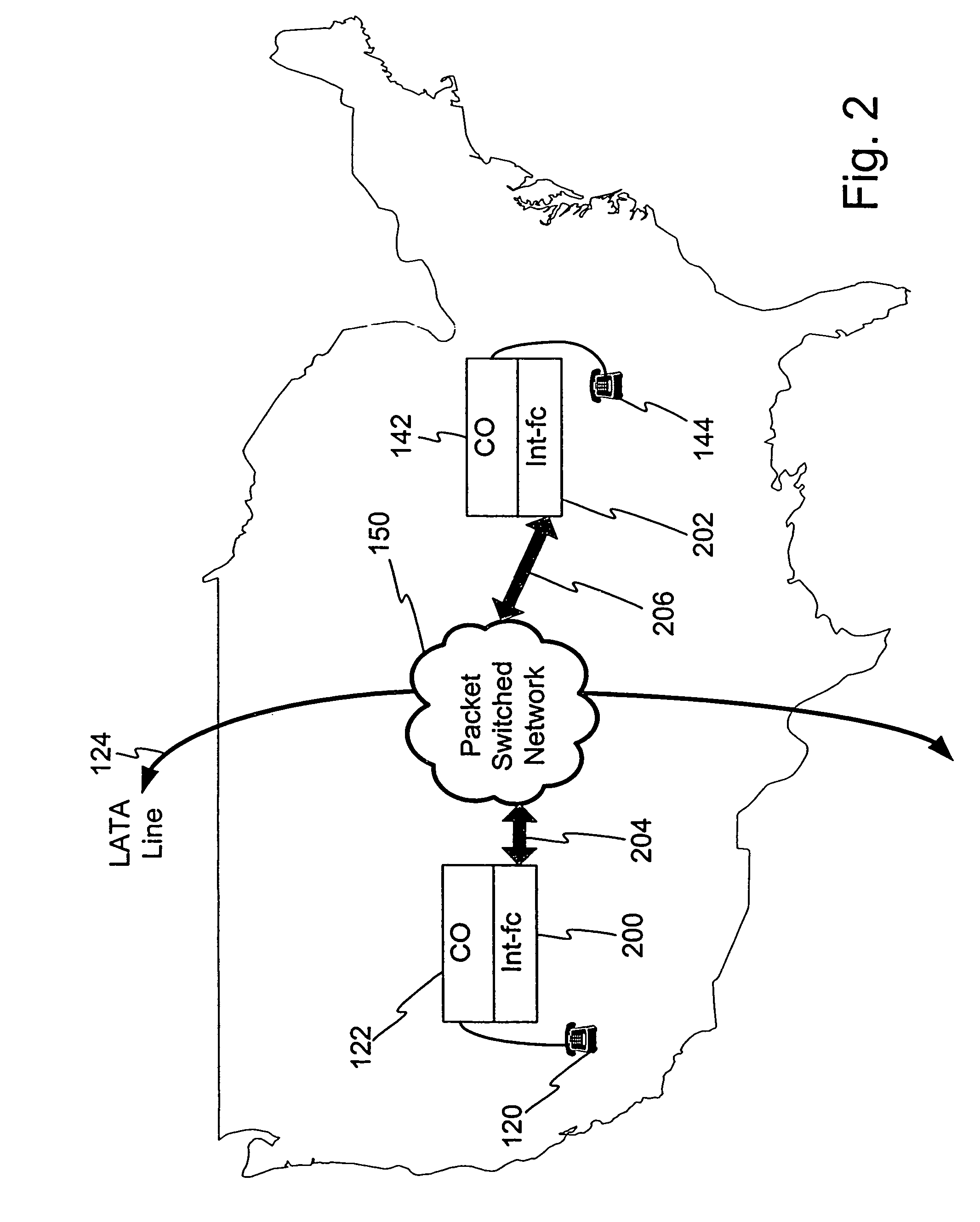Monitoring and control module
a communication device and monitoring module technology, applied in the field of voice encoded communications, can solve the problems of reducing the profitability of providing traditional long distance telephone service, limiting competition, and poor utilization of available bandwidth on active voice trunks, and achieve the effect of improving communication quality
- Summary
- Abstract
- Description
- Claims
- Application Information
AI Technical Summary
Benefits of technology
Problems solved by technology
Method used
Image
Examples
example environment
[0053]For purposes of understanding, the present invention is first described in an example environment well suited for use of the present invention. FIG. 2 illustrates an example environment of a telephone network. In comparison to FIG. 1, like elements are labeled with like reference numerals. As shown, a communication device, such as telephones 120, 144 connects to a central office 122, 142 via a local loop or any other communication medium. Co-located within each central office 122, 142 is the Interface 200, 202 (Voice / Packet Interface) of the present invention. The equipment of the central office 122, 142 responsible for receiving and routing the incoming call is configured in communication with the Interface 200, 202. Generally similar configurations exist in central office 122 and central office 142. As the configuration of the central office 122, 142 is generally understood by those of ordinary skill in the art, a detailed description is not provided herein.
[0054]Each of the...
example embodiments
[0055]FIG. 3 illustrates a block diagram of the present invention's linkage with existing systems of a telecommunication system wherein more than two Interfaces 200, 202, 220, 230 are enabled for operation. In comparison to FIG. 2, like elements are referenced with like reference numerals. As shown in this figure, the Interface 200 and Interface 202 are located remotely from central office 122, 142 and connected to each other by high speed and high capacity communication media 210, 204, 150, 206, 216. In one embodiment the communication capacity comprises T-1 capacity. In other embodiments the communication capacity or standard may comprise T-3, T-4, E-1, E-3, or OC-3 capacity. Various media can be utilized to carry this capacity including wireless, microwave, satellite link, and fiber optics.
[0056]Also shown in FIG. 3 is additional Interface 220 communicating with the Internet 150 via high speed and high capacity lines 212 and interfacing with a third central office 222.
[0057]Also ...
PUM
 Login to View More
Login to View More Abstract
Description
Claims
Application Information
 Login to View More
Login to View More - R&D
- Intellectual Property
- Life Sciences
- Materials
- Tech Scout
- Unparalleled Data Quality
- Higher Quality Content
- 60% Fewer Hallucinations
Browse by: Latest US Patents, China's latest patents, Technical Efficacy Thesaurus, Application Domain, Technology Topic, Popular Technical Reports.
© 2025 PatSnap. All rights reserved.Legal|Privacy policy|Modern Slavery Act Transparency Statement|Sitemap|About US| Contact US: help@patsnap.com



